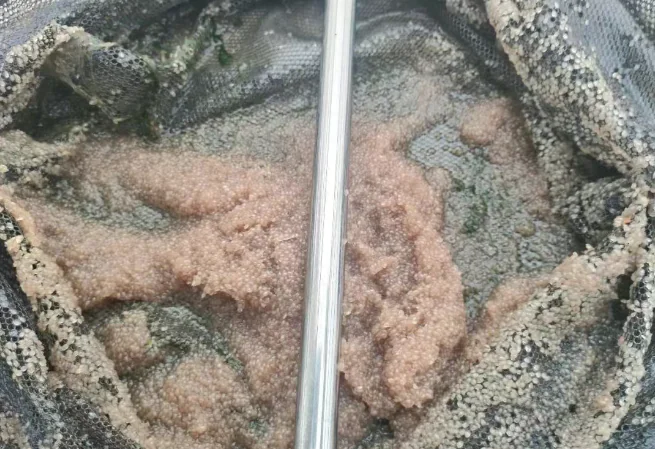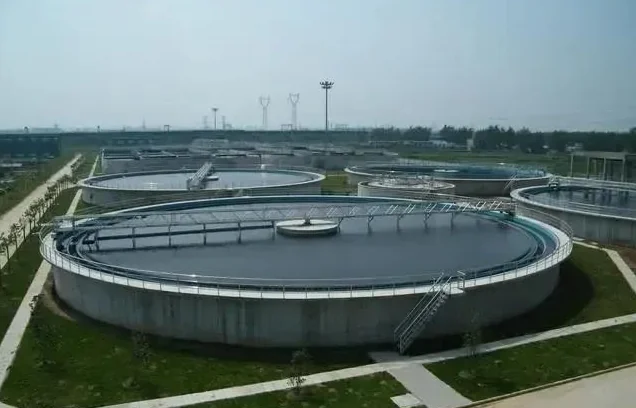In hot summer months, red worm (bloodworm) outbreaks frequently occur in secondary clarifiers, aeration tanks, or contact oxidation tanks. These tiny but stubborn aquatic worms—though beloved by anglers—can seriously disrupt wastewater treatment operations and effluent quality.
Short video monitoring often shows red worms clustering into visible masses, forming reddish floating mats on the clarifier surface. If the system contains media or bio-carriers, the worms may cling to surfaces or hide deep within the sludge layer, making them difficult to eliminate.

❓ Why Do Red Worms Explode in Wastewater Systems?
Based on extensive field cases, red worms (commonly Tubifex species) exhibit four key ecological behaviors that contribute to their outbreaks:
- High Oxygen Demand They are strict aerobic organisms that thrive in high DO (dissolved oxygen) environments. In low-oxygen zones, their survival is limited.
- Prefer Cleaner Effluent Paradoxically, systems with low organic loading and “clean” water quality are more prone to red worm growth.
- Feed on Activated Sludge Red worms consume activated sludge and the organic matter attached to it, interfering with sludge age control and biomass levels.
- Colonize Dead Zones Areas with low flow velocity or stagnant water—such as corners, under aeration grids, or inside media—are their favorite breeding spots.
👉 This explains why well-performing systems with stable effluent and low loading can unexpectedly become ideal breeding grounds for red worms.
🛠️ How to Control a Red Worm Outbreak?
Many operators instinctively reach for biocides or chemical agents when worms appear—but experts caution against this. Improper chemical dosing can kill beneficial microorganisms, destabilize the biological system, and even collapse the treatment process.
Effective control requires targeted system-level adjustments, not just quick fixes. Here are three scientifically recommended strategies:
1. Adjust Aeration – Reduce DO
- Slightly lower the dissolved oxygen level in aeration tanks
- Makes the environment less favorable for worms while preserving microbial activity
2. Increase Influent Organic Load
- Raise influent COD or BOD to shift system conditions
- Higher loadings suppress red worm survival and stimulate microbial competition
3. Improve Hydraulics – Eliminate Dead Zones
- Optimize mixing and flow distribution
- Reduce stagnant areas where worms accumulate and breed

✅ Proactive Management Advice
Red worms are not invincible — but managing them requires careful system tuning rather than harsh interventions. If you’re operating a wastewater facility and facing issues like:
- Floating red mats in clarifiers
- Sludge volume loss
- Fluctuating effluent quality
👉 Conduct a rapid diagnosis of key parameters (DO, MLSS, F/M ratio) and evaluate loading conditions.
💬 Operators with hands-on experience are welcome to share their solutions in the comments.
📞 For technical support and customized red worm control plans, feel free to contact our team.
